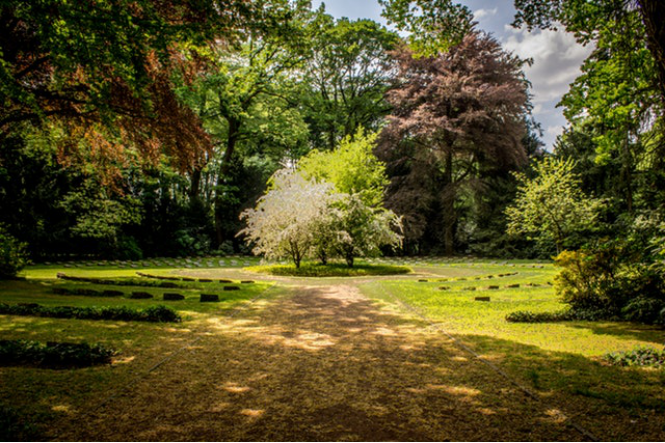
A rain garden catches rainwater that runs off lawns, driveways, and roofs not used for the practice of harvesting rainwater. When well-designed, a rain garden can hold runoff for so long a time that it eventually gets soaked into the soil rather than go down storm sewers, thus making them helpful against flooding and soil erosion. Another reason to have a well-designed and well-built rain garden is the fact that it can help in cleaning rainwater runoff through the removal of nearly 100 percent fertilizer nutrients, and almost 80 percent of all sediments
And of course, it makes your property look more gorgeous—provided that it’s well-designed and well-built. Below is a rundown of ideas you can go for with your rain garden.
* Use shade to your advantage.
The general rule when it comes to siting a rain garden is to site them where you think they best fit in the yard, but these should be kept 1.52 to 3 metres away from a foundation of your house. Ideally, you should try locating the rain garden in an area where it can collect rain runoff from all hard surfaces nearby, such as the walkways that surround a corner garden.
A rain garden works well in shade, partial shade, or sunny spots. The best plants for a rain garden are those capable of adapting to fluctuating moistures of rain gardens and ensure interest throughout a season.
* Going double.
Consider the design of two mirrored gardens to flank the central pathway. Once the second season of growing comes, both beds are expected to sparkle as the plants mature. To ensure that the gardens fulfill their respective purposes, you can have stone spillways built to direct the runoff of rain from any hard surfaces nearby to the gardens themselves. As for the lower side, each can have a drain pipe and overflow spillway built. These shift runoff to storm sewer channels nearby when heavy rain falls and fills both gardens to the point of overflow. The inclusion of an overflow spillway can also help in ensuring that water won’t backflow and swamp the foundation of your house.
* Build a bridge over the garden.
Trade the lawn for a lovely and lengthy rain garden, one that has a bridge that spans over the entire garden. The addition of the bridge not only ensures that you can go around your property without any hassle; it also allows the whole garden to absorb the maximum amount of rainwater it is capable of absorbing. This arrangement, therefore, is the rain gardening approach that’s most effective in reducing soil erosion and flooding in your area, especially if combined with a rainwater harvesting system that has a large rainwater tank.
* Add ornamental grasses to the rain garden.
The addition of ornamental grasses ensures texture, colour, and movement to your rain garden. Blue fescue, in particular, gives the rain garden a steely hue. Match with paver stone edging to give your garden a more formal appearance that should remind you of brick raised beds near your house. Add in river rock too, as it aids in the flow of water.



Leave A Comment